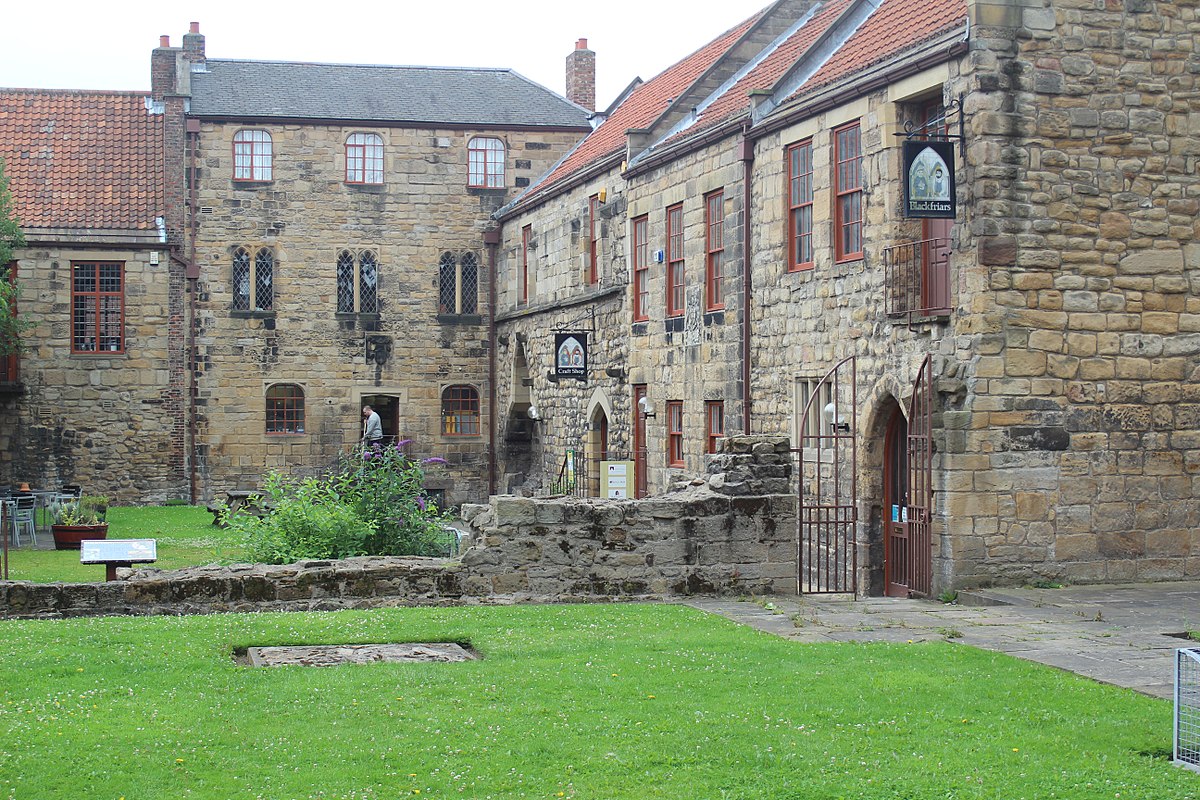Introduction
The Black Friar in Newcastle is one of the city’s most significant historical landmarks, deeply rooted in medieval history and religious tradition. Located near the city center, it is a well-preserved remnant of the Dominican order, also known as the Black Friars, who established a presence in Newcastle upon Tyne during the 13th century. This article explores the origins, historical significance, architectural features, and modern-day relevance of the Black Friar in Newcastle.
Origins and Establishment
The Black Friars, officially known as the Order of Preachers, were a Roman Catholic monastic order founded by Saint Dominic in the early 13th century. Their mission was to spread Christian teachings through preaching and education. By the mid-1200s, the Dominican order had spread across Europe, including England, where they established various friaries.
The Newcastle Black Friars were founded in the 13th century, during a period of rapid urban and religious development in England. The friary was strategically built within the city walls, offering protection and easy access to the town’s population. The site became a center of religious study, worship, and community service, reflecting the Dominicans’ dedication to education and public engagement.
The Role of the Black Friars in Medieval Society
Unlike monastic orders that lived in seclusion, the Black Friars were mendicants, meaning they relied on charity and actively engaged with the community. The friars played a crucial role in Newcastle by offering religious instruction, serving the poor, and providing shelter to travelers and the needy. They were well-regarded for their intellectual contributions, as the Dominicans emphasized theological scholarship and often established schools within their friaries.
Their influence extended beyond Newcastle, as they were involved in broader ecclesiastical and political matters. Many friars were highly educated and served as advisors to kings and nobles. The presence of the Black Friars in Newcastle reflected the town’s growing importance as a center of trade and governance in medieval England.
Architectural Features and Layout
The Black Friars’ complex in Newcastle was built using locally sourced stone and was designed in the traditional monastic style. It consisted of several key structures, including a church, a cloister, a chapter house, dormitories, a refectory, and a library. The layout was centered around the cloister, an open courtyard surrounded by covered walkways, which served as a place for meditation and communal activities.
The church was the heart of the friary, where daily prayers, masses, and religious ceremonies took place. The chapter house was another essential space, where friars gathered for meetings and discussions about the administration of the friary. The refectory was the dining hall where the friars shared meals, often in silence while listening to religious readings.
Over the centuries, the architectural landscape of the Black Friars in Newcastle evolved due to expansion, modifications, and restoration efforts. Despite the challenges posed by time and historical events, significant portions of the original structure remain intact, offering a glimpse into medieval monastic life.
Decline and Dissolution
The dissolution of the monasteries under King Henry VIII in the 16th century marked a turning point for the Black Friars in Newcastle. In 1536, as part of Henry VIII’s sweeping religious reforms, monasteries and friaries across England were disbanded, and their properties were confiscated by the Crown.
The Black Friars of Newcastle met the same fate, leading to the dispersal of the friars and the repurposing of the buildings. Over the following centuries, the site underwent various transformations, serving as private residences, workshops, and commercial spaces. The friary’s original religious function was lost, but its architectural remnants survived, preserving its historical significance.
Restoration and Modern Use
In the 20th century, efforts to restore and preserve the Black Friars complex gained momentum. Recognizing its historical and cultural value, conservationists worked to protect and renovate the site. Today, the Black Friars in Newcastle is one of the best-preserved medieval friaries in England, attracting visitors interested in history, architecture, and heritage.
The site now houses a mix of cultural and commercial establishments, including restaurants, artisan workshops, and event spaces. Blackfriars Restaurant, located within the friary, is renowned for its historic ambiance and traditional British cuisine. The restaurant embraces the medieval heritage of the site, offering a dining experience that connects guests with Newcastle’s rich past.
Additionally, the Black Friars complex hosts historical reenactments, educational tours, and cultural events that bring medieval history to life. These activities help raise awareness about the site’s significance and ensure that future generations appreciate its legacy.
The Black Friars and Newcastle’s Heritage
The Black Friars in Newcastle serve as a vital link to the city’s medieval history and religious traditions. Their presence shaped the spiritual and social fabric of the community, leaving a lasting impact on the city’s development. The site is an important reminder of Newcastle’s past, providing a tangible connection to the era of monasticism and medieval scholarship.
Newcastle’s commitment to preserving its historical landmarks, including the Black Friars, reflects the city’s dedication to heritage conservation. By maintaining and repurposing these structures, Newcastle ensures that its rich history remains accessible and relevant to contemporary society.
Conclusion
The Black Friar in Newcastle stands as a testament to the enduring legacy of the Dominican order and medieval monastic life. From its origins as a thriving religious center to its dissolution and eventual restoration, the site has witnessed centuries of change while retaining its historical essence. Today, it serves as both a cultural landmark and a functional space, blending history with modernity.
As one of Newcastle’s treasured heritage sites, the Black Friars continue to inspire curiosity and appreciation for the city’s medieval past. Whether through historical tours, architectural appreciation, or dining in its ancient halls, visitors can experience a piece of history that has withstood the test of time. The Black Friars of Newcastle are not merely relics of the past but a living bridge between history and the present, reminding us of the enduring significance of Newcastle’s medieval heritage.

